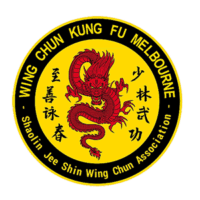- Call Us +61 401 530 643
Blog
5 Stages of Combat – Traditional Wing Chun
5 Stages of Combat:
Traditional Wing Chun derives from the Leung Bik / Yip Man Wing Chun System.
Yip Man learnt this style of Wing Chun from Leung Bik in Hong Kong around 1915.
Leung Bik is the Son of the legendary “king fo wing chun”, Dr. Leung Jan.
This unique wing chun fighting system is relatively new in Australia.
It introduced to Melbourne in the late 70’s, by Grand Master William Cheung.
The Five Stages of Combat:
1: Non Contact Stage
2: Contact Range
3: Exchange Range
4: Pursuit
5: Retreat
Before Contact Stage
Sifu Garry refers to this as non contact stage.
You will assume a side neutral stance with guard on the central line.
It is more practical not to be committed at stage, so we do not limit our mobility.
In Traditional Wing Chun it is more practical to assume a side neutral stance to prepare for the unexpected.
The safe distance between You and the Perpetrator should be just outside the kicking range.
Always move to this safe distance before engaging.
Contact Stage
Contact stage is when both fighters reach a distance, which enables limited contact with the arms and legs.
There is limited contact to the main body targets.
To gauge this distance perfectly one must be wrist on wrist.
At contact stage, the central line is used at the outer perimeter with a front stance.
The body turned slightly to minimize the target area.
Information comes in from the contact point as well as visual observation.
Skill gained through chi sao exercises, give you a huge advantage over your opponent.
Exchange Range
Once in exchange range, contact to the head and body is now possible.
Kicking is generally not favorable at this stage other than low kicks.
At this range maximizing protection is imperative.
The practitioner must put his rear guard up higher than usual to protect his upper gate.
The focus will be on the center of gravity and nearest elbow point to forecast the next movement.
When the elbow is controlled, so is his balance.
Then the practitioner can control it as to find vital targets on the head and body.
The Wing Chun practitioner is aided at this close range by Wing Chun’s low leg kicks.
Utilizing arms and legs simultaneously is a skill that must be mastered in Wing Chun Chi Sao.
Pursuit
When an opponent retreats, chase him.
This stage is pursuit and is a general concept of Chi Sao.
The general rule is that the practitioner should try to keep contact to control the Opponent.
He should cover the nearest elbow point and pursuit with quick, efficient stepping.
If the Opponent retreats contact will be broken.
Then the practitioner can bridge the gap or use front kick to achieve further contact.
Retreat
Sometimes when one is in an unfavorable situation, one must retreat in order to re-organize oneself.
A practitioner would generally use Fut sao and backward step to get out of the situation.
Sometimes a combination of Fut sao and Bill sao together with a double back step can be very useful.
Never the less, one must return to the central line system for better protection once you have regained your ground.
If an Individual has to deal with a larger Opponent, unfavorable circumstances can arise.
It is imperative to understand the Retreat Stage of Combat in Traditional Wing Chun.
Categories
- Sifu Garry's (30)
- Sifu Linda's (17)

